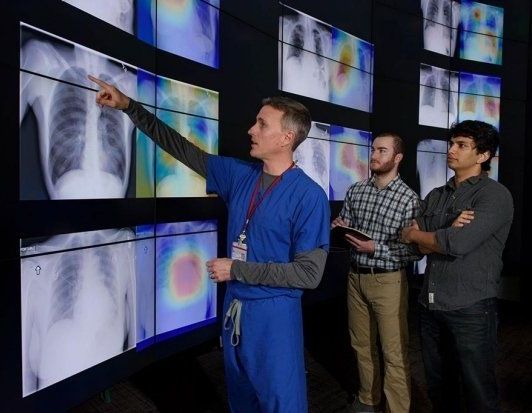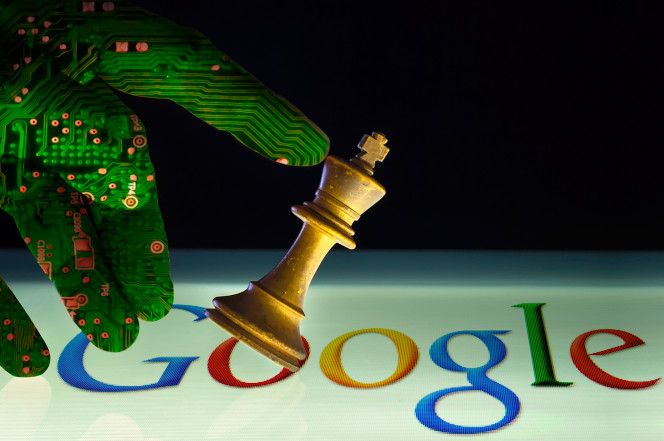Google’s artificial intelligence sibling DeepMind repurposes Go-playing AI to conquer chess and shogi without aid of human knowledge.


Chinese AI-powered robot Xiaoyi took the country’s medical licensing examinations and passed, according to local reports. Xiaoyi is just one example of how much China is keen on using AI to make a number of industries more efficient.
Experts generally agree that, before we might consider artificial intelligence (AI) to be truly intelligent —that is, on a level on par with human cognition— AI agents have to pass a number of tests. And while this is still a work in progress, AIs have been busy passing other kinds of tests.

Stanford researchers have developed an algorithm that offers diagnoses based off chest X-ray images. It can diagnose up to 14 types of medical conditions and is able to diagnose pneumonia better than expert radiologists working alone.
A paper about the algorithm, called CheXNet, was published Nov. 14 on the open-access, scientific preprint website arXiv.
“Interpreting X-ray images to diagnose pathologies like pneumonia is very challenging, and we know that there’s a lot of variability in the diagnoses radiologists arrive at,” said Pranav Rajpurkar, a graduate student in the Machine Learning Group at Stanford and co-lead author of the paper. “We became interested in developing machine learning algorithms that could learn from hundreds of thousands of chest X-ray diagnoses and make accurate diagnoses.”
Or change scenes from day to night, sunny to rainy, and more.
Researchers published two new papers that demonstrate that it’s possible to develop an AI system which doesn’t rely on parallel texts.
Masking a human or other subject out of a scene is a pretty common trick nowadays, but it’s is still arguably one of the hardest and lowest-tech parts of Photoshop. Adobe’s about to make that a lot easier, thanks to an upcoming AI-powered feature called Select Subject. Using it is pretty much idiot-proof: From the main or “Select and Mask” workspaces, you just need to click anywhere on the image, and it’ll automatically select the subject or subjects in the image. From there, you’re free to change the background or tweak the subject separately.
The tech is powered by Adobe’s AI platform, Sensei. “Complicated details around the subject aren’t an issue, because this feature is using machine learning to recognize the objects,” Adobe Photoshop Product Manager Meredith Payne Stotzner says in the YouTube video (below). During the demo, she uses it select a single person on the street, a group of volleyball players, a couple on the beach and a red panda.
While accidents have happened, one of the most appealing things about autonomous vehicles is their capacity to make our roads a safer place. Now, insurance companies are starting to offer financial incentives to promote adoption.
Britain’s largest automobile insurance company, Direct Line, has announced a 5 percent discount for customers who activate Autopilot functionality in their Tesla. It follows in the footsteps of Root, a startup that offers a similar promotion across nine states in the US.


The robots are coming for your … chess game.
Google’s AI, AlphaZero, developed a “superhuman performance” in chess in just four hours.
Essentially, the AI absorbed humanity’s entire history of chess in one-sixth of a day — and then figured out how to beat anyone or anything.
After being programmed with the rules of the game (not the strategy) AlphaZero played 100 games against Stockfish, the world champion chess program. AlphaZero won 25 playing as white (which has first-mover advantage) and three games playing as black. The last 72 games were a draw with AlphaZero recording no losses and Stockfish recording no wins.

Awesome!
A few months after demonstrating its dominance over the game of Go, DeepMind’s AlphaZero AI has trounced the world’s top-ranked chess engine—and it did so without any prior knowledge of the game and after just four hours of self-training.
AlphaZero is now the most dominant chess playing entity on the planet. In a one-on-one tournament against Stockfish 8, the reigning computer chess champion, the DeepMind-built system didn’t lose a single game, winning or drawing all of the 100 matches played.